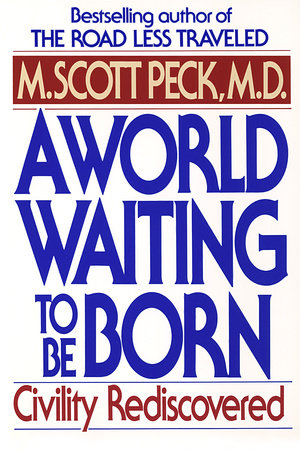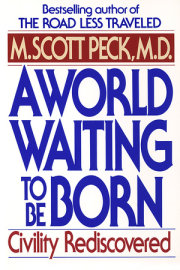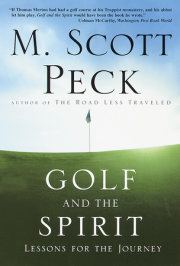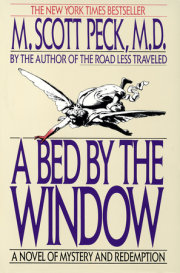CHAPTER 1
Something Is Seriously Wrong
Toward a Redefinition of Civility
There is an illness abroad in the land.
On Monday, January 29, 1990, the USA Today newspaper carried a full-page advertisement. Tiny print in the left lower corner identified the advertiser as Dun & Bradstreet (D&B), a large financial analysis firm specializing in “The Fine Art of Managing Risk.” Otherwise, the entire page was devoted to four brief sentences in bold type:
I’M 30,000 FEET OVER NEBRASKA AND THE GUY NEXT TO ME SOUNDS LIKE A PROSPECT.
I FIGURE I’LL BUY HIM A DRINK, BUT FIRST I EXCUSE MYSELF AND GO TO THE PHONE.
I CALL D&B FOR HIS COMPANY’S CREDIT RATING. THREE MINUTES LATER I’M BACK IN MY SEAT BUYING A BEER FOR MY NEW BEST FRIEND.
Something is seriously wrong.
A year earlier, I received a hint as to what is wrong—the nature of the illness involved—when I had the opportunity to meet for four days with the Commissioners of Education of the United States. These “Chief State School Officers” had gathered together to consider a profound and controversial issue: the teaching of values in public schools. During the first day, we listened to scholars present papers on the history of public education in the United States. I was surprised to learn that in the early days of the nation there had been great and heated debate over whether there even should be public education supported by taxation. The debate was resolved on the grounds that in order to sustain a democratic society, public education was required for the widespread teaching of “civics.”
By civics, our leaders two hundred years ago meant something far broader than a simple intellectual knowledge of the Constitution and legislative processes. Primarily they meant a deep-seated set of values that would be a foundation for responsible citizenship—values encouraging interest and involvement in large social issues as opposed to mere self-centeredness, values necessary to maintain the health of democracy.
Closely allied to civics is another word: civility. It has an old-fashioned, almost quaint ring to it, doesn’t it? Why is this so?
In The Different Drum I attempted to take a word, community, that had lapsed into obsolete meaninglessness and both resurrect and redefine it. This book is a similar attempt. I wish to resurrect and redefine the meaning of civility. This is necessary for the healing of our society.
To most people, civility means only politeness or good manners. Indeed, this is essentially the dictionary definition. But there are enormous problems with such a definition. In the advertisement the businessman flying over Nebraska was perfectly polite. He excused himself when he got up to go to the phone, and he had the good manners to pay for his seatmate’s drink. Yet his behavior was utterly self-serving and manipulative. It was not at all what I would call civil.
Then what is civility? Politeness and good manners are designed to avoid hurting people’s feelings. But I began to arrive at a better definition of civility when I ran across an amusing yet profound quote from Oliver Herford, who once said, “A gentleman is one who never hurts anyone’s feelings unintentionally.” In other words, civility might have much more to do with conscious intention—awareness—than with not hurting feelings. In fact, on occasion, it might actually be civil to hurt someone’s feelings as long as you know what you’re doing.
Although a far more complex matter than superficial politeness, civility certainly does have to do with how we humans relate with each other. Whenever there is a relationship between two or more people, an organization of some sort is involved. Genuine civility is then, in part, consciously motivated organizational behavior. And this is a book about organizational behavior.
Organizational behavior is the term given to the study of how human beings behave in organizations. This study includes not only how individuals behave, but also how groups—and even organizations themselves—behave.
In its very broadest sense, organizational behavior encompasses virtually the entire field of human psychology, since almost all human behavior occurs in the context of one or more organizations. Consider the businessman in the ad. He is employed by an organization, as is his seatmate. He strikes up a relationship with his seatmate in the hope of establishing a relationship between their organizations. In the process of doing so, he is using the services of four other organizations: a financial analysis firm, a telephone company, an airline, and a beer-manufacturing business. Moreover, he is doing all this within the context of an organization called society—which, in this case, seems to encourage rather than discourage manipulative organizational behavior.
We are organizational creatures. We are born not only into a society and culture but usually into a specific, complex organization: a family. Our marriages are organizations. We study in schools that are organizations; we earn a living in businesses that are organizations; at some time or another we will likely worship in an organization; and when we die there will be organizations to usher us out of this world.
This is not a textbook. Although broad in approach, it makes no attempt at a thorough coverage of the field of organizational behavior. Furthermore, the usual purpose of a textbook is to objectively present organizational behavior as it is; in focusing on the issue of civility, my ultimate purpose is to suggest what I believe it can and ought to be.
The following chapters of this section will delineate the interlocking cornerstones—the underlying prerequisites—for civil behavior. Through this delineation, we shall gradually arrive at the more accurate and complete redefinition of civility that we so desperately need.
The second section will be devoted to an exploration of these cornerstones in the most common of organizations: marriage and the family. The third will examine civility in the context of business or the larger organizations for which we work. The differences between businesses and families will be noted, but so will many of the organizational dynamics they have in common. Finally, there will be a fourth, concluding, section on community in the workplace. It is entitled “Epiphany” because the mode of organizational behavior that I call genuine community is the vehicle par excellence for both the teaching and the practice of civility. Here lies our most exciting and unrecognized of frontiers.
Earlier I said that there is an illness abroad in the land. A full-page advertisement in USA Today costs a great deal of money. The scenario of a businessman checking the credit rating of his seatmate’s company before buying him a drink is not, in itself, so remarkable. What is remarkable is that such an expensive ad, literally extolling the virtues of uncivil, manipulative organizational behavior, must have met the overall approval of executives in the advertising agency that created it, the company that purchased it, and perhaps the newspaper that published it. This is why there is something seriously wrong not so much with the advertisement as with the culture that produced it. It seems we may live in a society that has almost forgotten the glory of what it means to be human. We are in need of healing.
Copyright © 2009 by M. Scott Peck, M.D.. All rights reserved. No part of this excerpt may be reproduced or reprinted without permission in writing from the publisher.







